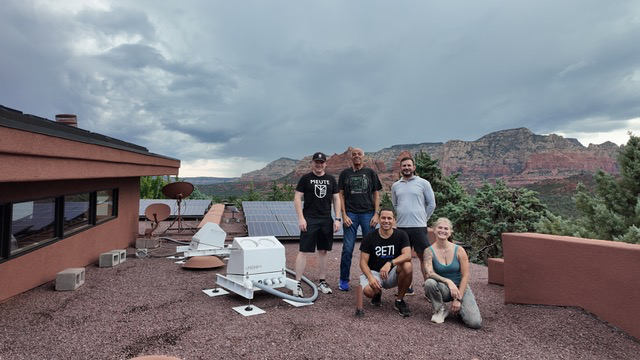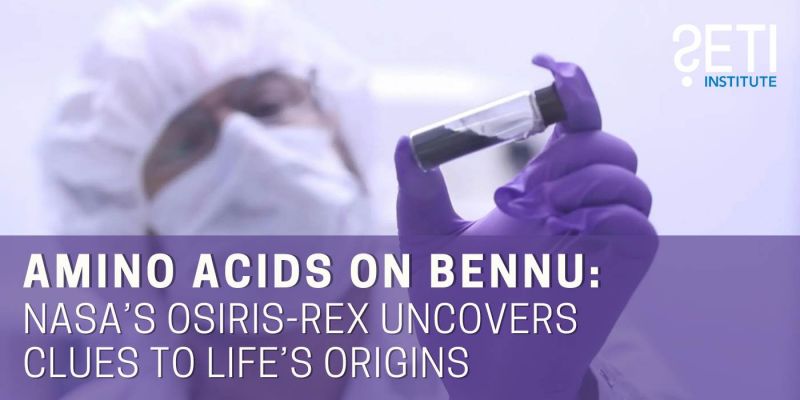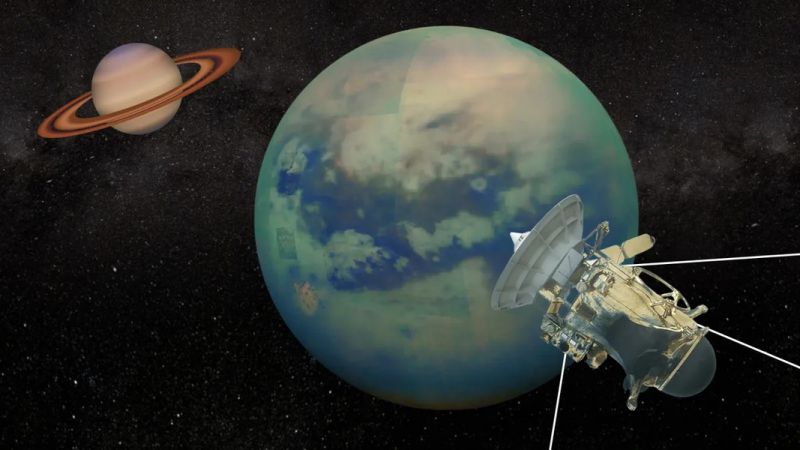
July marked a significant milestone in optical SETI research, as the SETI Institute team installed two new LaserSETI stations in Sedona, AZ. This installation brings the number of active LaserSETI observatories to three, enhancing our ability to scan the entire sky and monitor for extrasolar laser pulses continuously. LaserSETI stations need to be strategically placed around the globe to achieve this goal.
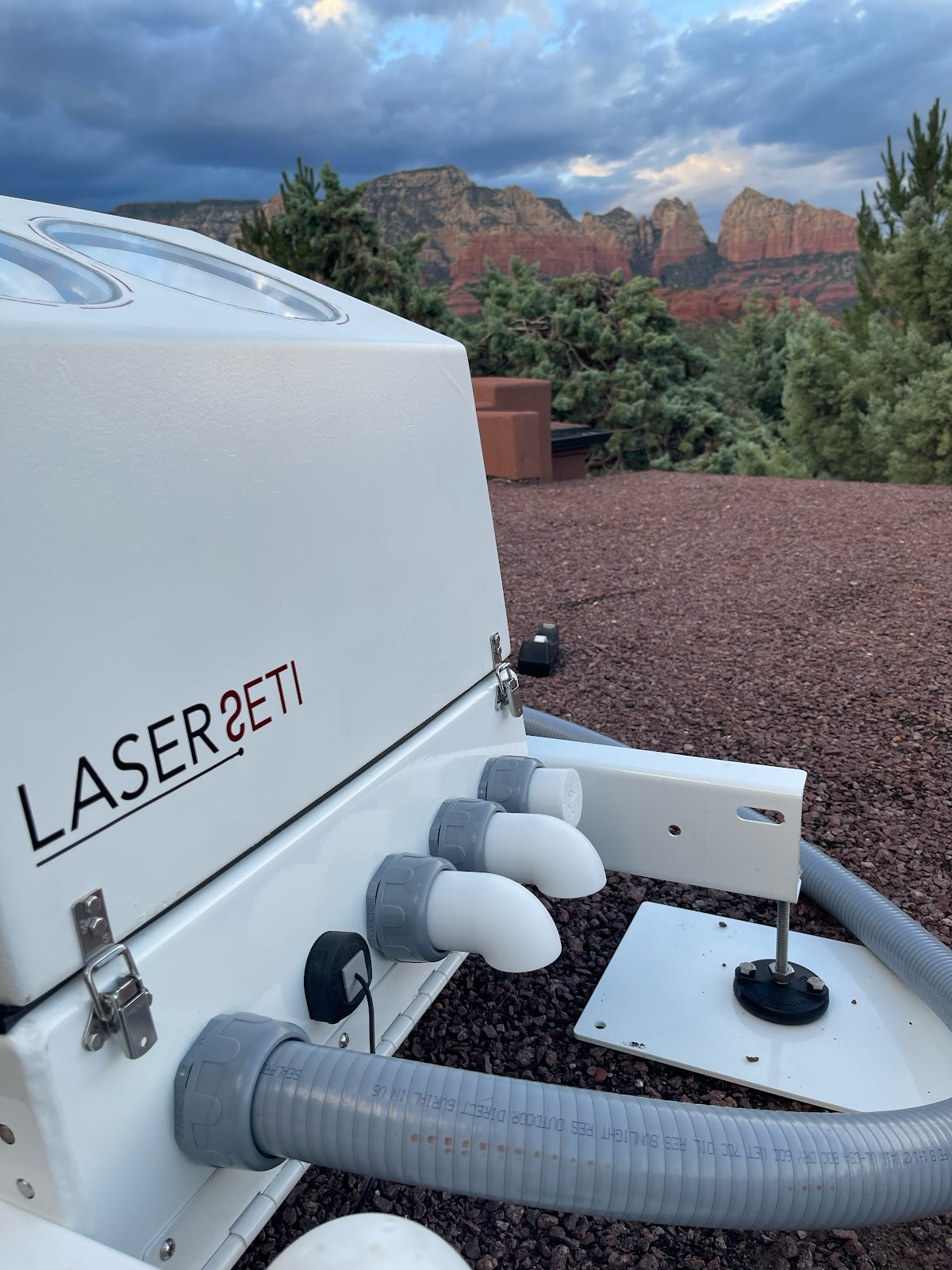
LaserSETI installations in California and Hawai’i collectively observe 18.5% of the sky. With the new observatory in Sedona, this coverage will increase to an impressive 31.4%. This expansion is a critical step towards achieving global coverage, enabling constant monitoring of the sky for technosignatures.
Initially constructed at LaserSETI Director Eliot Gillum’s home, the new stations were moved and finalized at the San Francisco SETI Institute/Unistellar offices. After completing them, we shipped them to Sedona, AZ on behalf of Richard Factor, who generously offered his roof as the site for the LaserSETI installation. Despite a brief disruption caused by a CrowdStrike outage, the entire team arrived on time and proceeded with the installation as planned.
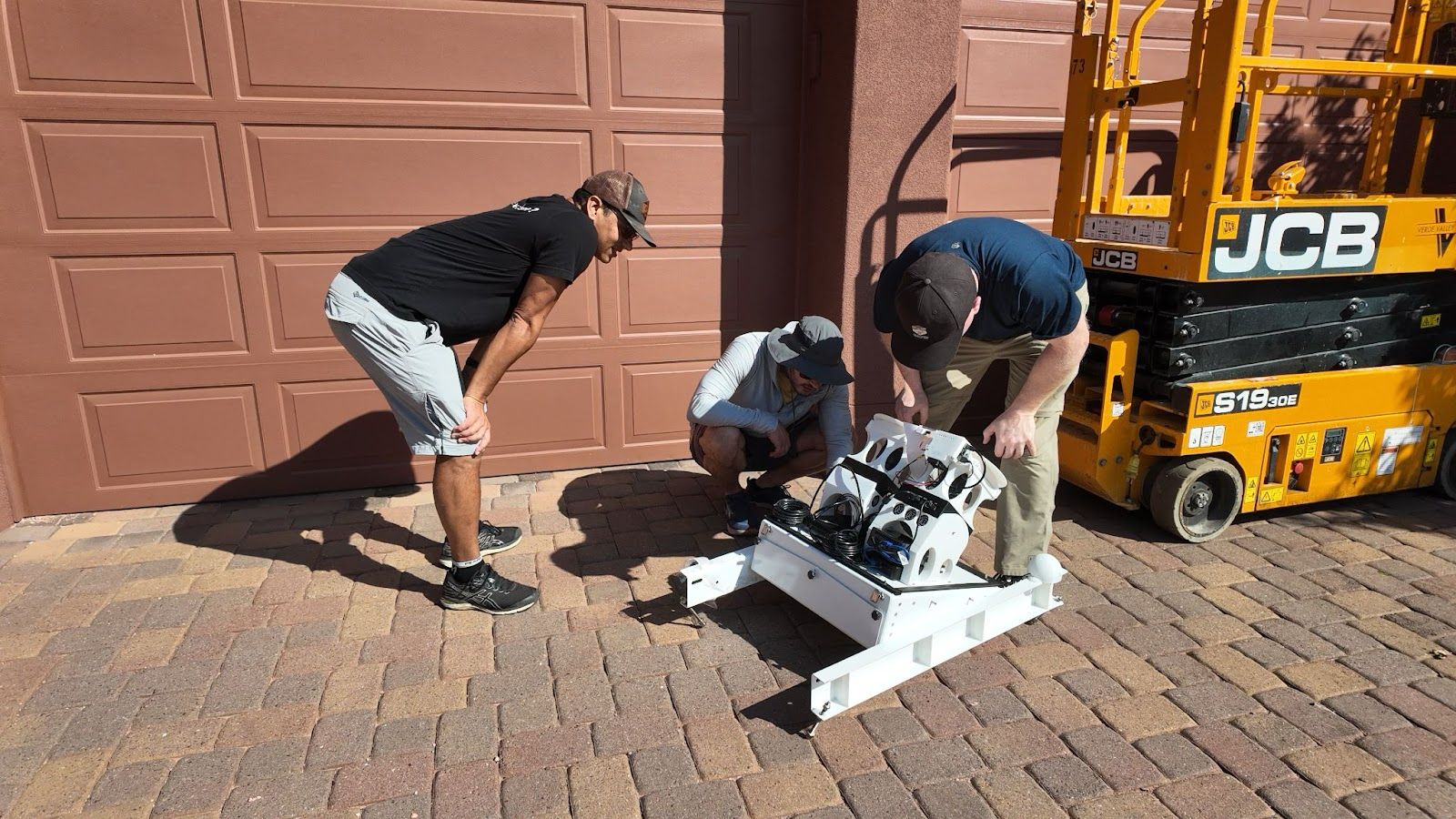
The journey wasn’t without its hurdles. Minor damage occurred during shipping, but the dedicated team quickly repaired the structures, ensuring they were functional for the installation. Upon arrival, the team’s first tasks included securing the stations on the roof and aligning them to the correct portions of the sky. They then ran power and Ethernet cables to the stations. After confirming power, we established remote connectivity.
Unfortunately, the Arizona night sky was too cloudy to complete the final step of focusing the instruments. Additionally, several software updates are still needed before the survey can be fully automated. As a result, the team will have to return for the “first light” once the final pieces are in place, probably before September 2024.
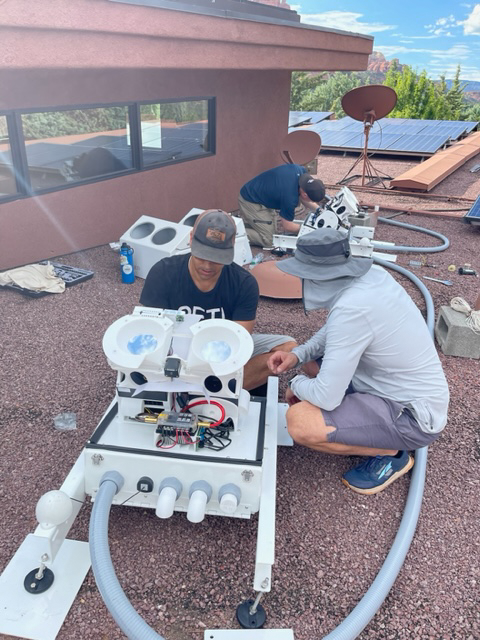
The LaserSETI project has ambitious plans for further expansion. Nine more stations are currently under construction, bringing us closer to our goal of comprehensive sky coverage. The LaserSETI team plans to install these upcoming observatories in the Caribbean, the Arabian Peninsula, Europe, and the Himalayas.
The dedication and perseverance of the LaserSETI team, coupled with the generosity of supporters like Richard Factor, are driving us ever closer to answering one of humanity’s most profound questions: Are we alone in the universe?
